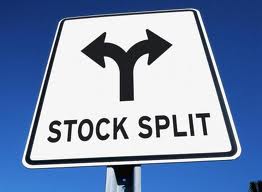The Danger of All Stocks
The 100% Stock Solution
Excerpt:
Stocks often have outperformed bonds over long periods. An investor who put $100,000 into the Standard & Poor's 500-stock index 25 years ago would have had more than $1 million this April, while the same amount in the Barclays U.S. Aggregate Bond Index would be worth $560,900, according to investment researcher Morningstar.
The problem: Stocks take investors on a rockier ride, and the threat of large, long-lasting drops looms. The S&P 500 fell 38% in 2008, amid the financial crisis, and didn't close above its precrisis peak until March.
Investors risk locking in their losses if they sell stocks after that kind of drop, as many did during the financial crisis, due either to fear of greater losses or a short-term need for cash. If the money is needed to fund retirement, for instance, the damage can be catastrophic.
To manage that risk, conventional wisdom dictates striking a balance, putting some investments in stocks and some in bonds and gradually adjusting the proportions to boost the fixed-income allocation as an investor ages. Popular "target date" mutual funds often make the adjustment automatically.
... All-stock investors need to make sure they can ride out a downturn. That is a difficult calculation to make because no one knows how long a bear market will last—or how low it will go.Comment: There are mitigating factors: For example does one have a guaranteed stream of income: say a pension or social security. The key seems to be, if one cannot ride out a downturn, then the all-stock portfolio is at risk.








































.jpg)









